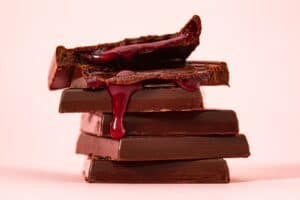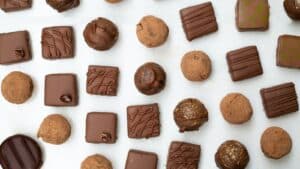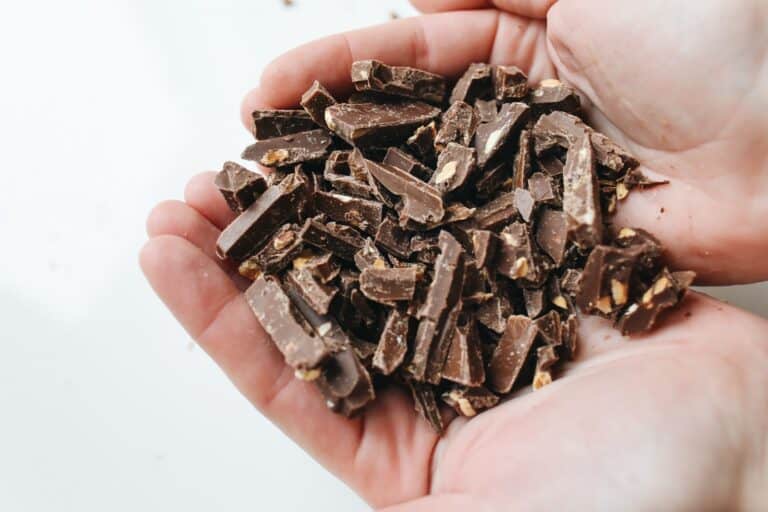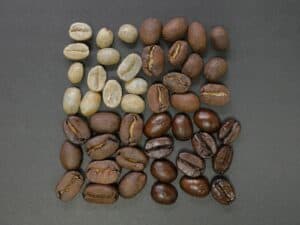When we think of chocolate today, we often picture delicious chocolate bars, creamy milk chocolate, or rich dark chocolate desserts. But have you ever wondered what was the original purpose of chocolate? The journey of this beloved treat through history is a fascinating tale that involves bitter elixirs, ceremonial drinks, and the evolution of a sweet indulgence.
The Ancient Beginnings of Chocolate

In the heart of Central and South America, thousands of years ago, the story of chocolate began with the humble cocoa bean. The Mayans and Aztecs were among the first to discover cocoa beans and their potential. These ancient civilizations didn’t consume chocolate as we do today; instead, they turned cocoa beans into a ceremonial drink that held great significance.
The cacao beans, often referred to as “the food of the gods,” were used in rituals and offered as gifts to rulers and deities. The Mayans prepared a bitter beverage by crushing roasted cacao beans and mixing them with water. This concoction was more of a ceremonial drink than what we now recognize as chocolate. It was enjoyed for its energizing properties and the feeling of well-being it provided, thanks to the natural stimulants found in cocoa.
Chocolate as a Bitter Elixir
Early chocolate had a far cry from the chocolate bars and chocolate chip cookies we indulge in today. It was a bitter elixir, often seasoned with ingredients like chili peppers and flavored with various spices. The Mayans and Aztecs believed in the health benefits of this concoction, using it to treat a range of ailments.
One of the key components of cocoa beans is cocoa butter, which contributes to the velvety texture and mouthfeel of modern chocolate. In the past, this cocoa butter was naturally present in the cacao beans and played a crucial role in creating the hot chocolate of ancient times. The bitter water was combined with spices, sometimes even vanilla, to enhance the taste.
Chocolate’s Role in Rituals

For the Mayans and Aztecs, cacao beans were not just for consumption; they had deep cultural significance. Cacao was involved in religious ceremonies and used in marriage rituals. It symbolized wealth and power and was even used as currency in trade. The cacao tree, or cacao plant, held a special place in their mythology.
In these ancient societies, chocolate was far more than just an edible treat. It was a bridge between the earthly realm and the divine. As the cacao plantations grew and chocolate became more accessible, its importance continued to rise.
European Transformation

The first encounter between European explorers and cocoa beans occurred during the 16th century. It wasn’t long before chocolate arrived on European shores, brought by the likes of Christopher Columbus. However, the European transformation of chocolate was profound.
In Europe, chocolate underwent a dramatic makeover. The bitter elixir was sweetened with cane sugar and enriched with milk, creating what we now know as milk chocolate. This transformation paved the way for the establishment of the first chocolate houses where the elite would gather to enjoy this fashionable beverage.
As demand for chocolate grew, so did the need for a more efficient way to produce it. This led to the invention of the cocoa press, which allowed for the extraction of cocoa butter and the production of cocoa powder. These innovations marked significant milestones in the history of chocolate.
Chocolate’s Modern Evolution
Fast forward to the chocolate industry of today, and you’ll find an astonishing variety of chocolate products, from the finest Swiss chocolatier creations to the most humble candy bars. Chocolate has evolved from its humble beginnings as a ceremonial drink to a global phenomenon.
We have dark chocolate, white chocolate, and countless other forms, each catering to different tastes. The invention of the first chocolate bar revolutionized the way we consume chocolate, making it a convenient and portable treat. Chocolate confections and chocolate ice cream continue to delight people of all ages.
Roasted Cocoa Beans: The Key to Delicious Chocolate
One crucial aspect in the evolution of chocolate was the discovery of the art of roasting cocoa beans. The transformation of cacao beans into what we now recognize as chocolate began with this simple yet pivotal step. The roasted cocoa beans brought a depth of flavor and aroma that was previously missing from the bitter cacao preparations of ancient civilizations.
The roasting process not only improved the taste but also made it easier to remove the cocoa butter from the beans. This cocoa butter would later become a fundamental ingredient in creating chocolate liquor, which serves as the base for various chocolate products. The art of roasting cocoa beans was a turning point in the history of chocolate, setting the stage for the creation of the chocolate we adore today.
Spanish Chocolate: A Sweet European Introduction
As the Age of Exploration unfolded, the discovery of chocolate by European explorers was a pivotal moment in its history. It was the Spanish conquistadors who first encountered chocolate during their voyages to the New World. The Spanish hot chocolate they encountered was a far cry from the bitter elixirs of Mesoamerica.
Upon its arrival in Spain, chocolate underwent further transformations. It was sweetened with sugar and flavored with vanilla, creating a much more palatable concoction for European tastes. These adaptations made chocolate increasingly popular among the European elite. Spanish chocolate quickly spread across the continent, becoming a fashionable beverage enjoyed in the courts and coffee houses of the era.
Chocolate Conquers the World

The appeal of chocolate didn’t stop at Spain’s borders. Soon, it found its way to other European countries, including France and Italy. As chocolate drinks became more widespread, the demand for cocoa beans grew, leading to the establishment of cacao plantations in the New World.
The Dutch played a significant role in the chocolate trade, introducing innovations like the cocoa press to Europe. This device allowed for the production of cocoa powder and cocoa butter in larger quantities, paving the way for more accessible and affordable chocolate products.
Chocolate in the Modern Era
Today, chocolate is a global phenomenon, with chocolate companies worldwide crafting an array of delectable treats. From Swiss chocolatiers like Daniel Peter, who invented milk chocolate, to the British chocolate company Fry’s, which created the first-ever chocolate bar, the world of chocolate has continually evolved.
In the aftermath of World War II, chocolate remained a cherished indulgence for people across the globe. New innovations such as chocolate confectionery and the ever-popular chocolate chip cookie further solidified chocolate’s place in our hearts and pantries.
Chocolate’s journey, from its discovery in ancient Mesoamerica to its current status as a beloved treat, is a testament to its enduring appeal. As we savor a piece of chocolate today, we are enjoying a delicious treat with a rich and diverse history that spans continents and centuries.
The Chocolate Press: Revolutionizing Cocoa Processing
In the ever-evolving world of chocolate, one of the most significant innovations was the invention of the cocoa press. This device, also known as a cocoa press, was a game-changer in cocoa processing. Developed in the 19th century, it allowed for the efficient separation of cocoa butter and cocoa powder from cocoa mass.
The cocoa press brought several advantages to the chocolate industry. It significantly reduced the labor-intensive process of manually extracting cocoa butter, making chocolate production more cost-effective. Moreover, it enabled the creation of solid chocolate bars, a convenient form of chocolate that could be easily transported and enjoyed by people of all walks of life.
Chocolate’s Role in Modern Confections
While the history of chocolate is rooted in ancient rituals and ceremonies, it has also played a vital role in shaping modern confections. Chocolate is a key ingredient in an array of delicious treats that have become staples in many households.
Chocolate confections, including truffles, pralines, and chocolate-covered fruits, are beloved by people worldwide. These delicacies showcase the versatility of chocolate, which can be molded, filled, and flavored in countless ways to create an endless variety of sweet delights.
Additionally, the world of desserts and baked goods wouldn’t be the same without chocolate. Chocolate chip cookies have become an iconic American treat, featuring chunks of chocolate that melt in your mouth with each bite. Whether it’s a warm brownie, a decadent chocolate cake, or a creamy chocolate mousse, chocolate continues to be at the heart of countless dessert recipes, bringing joy to dessert lovers everywhere.
Final Thoughts: What Was the Original Purpose of Chocolate?
In conclusion, the original purpose of chocolate was far removed from what we enjoy today. It started as a ceremonial drink with deep cultural and religious significance in Central and South America. Through centuries of transformation, from bitter elixir to sweet treat, chocolate has remained a beloved part of our lives. Understanding the history of chocolate allows us to appreciate the journey this delightful delicacy has undertaken. So, the next time you savor a piece of chocolate, remember the ancient civilizations that first discovered the magic of cocoa beans and the role it played in their lives.
- What Was The Original Purpose Of Chocolate
- What Skills Are Needed To Be A Chocolatier
- What Is Unsweetened Chocolate
- What Is The Most Popular Chocolate
- What Is The Best Chocolate For Fondue
- What Is Single Origin Chocolate
- What Is Kosher Chocolate
- What Is Compound Chocolate
- What Is Chocolate Liquor
- What Is Bittersweet Chocolate
- What Is A Christmas Chocolate Yule Log
- What Is A Chocolatier
- What Did A Bar Of Chocolate Prompt The Creation Of
- What Are Cocoa Nibs
- What Are Chocolate Truffles
- What Are Chocolate Bonbons

